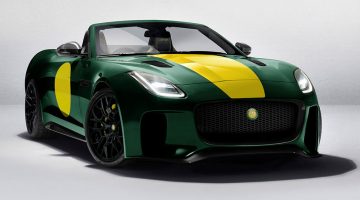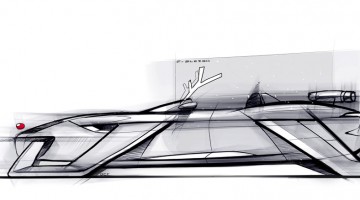CAR CONNECTIVITY
Cars talking to each other will be a key element of several future technologies, and JLR has plenty in development. Co-operative Adaptive Cruise Control takes current adaptive cruise control tech and evolves it. Present day ACC systems use radar to detect if a car ahead is slowing, and then react. But C-ACC uses Dedicated Short Range Communications technology to tell cars behind what’s happening. So if a car in front slams on the brakes, your car will know about it instantaneously and do the same thing, without having to wait for its sensors to read and react.
The long-term aim for this tech is to improve safety, and allow platooning – letting autonomous cars travel in close convoy on motorways. Shorter reactions would allow closer travel, which improves fuel economy by reducing aerodynamic drag – much like drafting in motorsport.
Off-Road Connected Convoy uses similar technology and is aimed at those that like to go off the beaten track in a group. When a lead vehicle changes something on the car, such as suspension settings, or notices an obstacle, the information is instantly beamed to the other cars in the convoy. Those behind can either have those settings mirrored automatically or use the information as they see fit. If the convoy is autonomous, it will help keep the vehicles safer in difficult terrain.
Over the horizon warnings will beam traffic, road and accident information to surrounding vehicles, to warn drivers and autonomous systems in the vicinity of unseen conditions. This technology is being shared between government and several manufacturers in the UK to establish a standard, so that all connected cars can benefit. Features will include notifications of upcoming emergency vehicles and warning of obstacles or hazards around blind bends, or of messages on gantries. Expect similar programmes around the world.
ROADWORK ASSIST
Ever been in a contraflow with narrow, cone-marked lanes? For nervous drivers this can be a testing time, but Roadwork Assist uses stereo cameras to spot cone lanes and help plot the best course between them. It works much like modern lane keep assist systems, but the camera tech allows temporary lanes and barriers to be identified as well as painted lines on the road.
OVERHEAD CLEARANCE ASSIST
If you’ve ever driven a car with a bike mounted to the roof, you’ll have known the phobia of low bridges, car park entrances and the like. Overhead Clearance Assist uses a stereo camera to measure upcoming overhead barriers, and will be able to tell you if you’ll make it with space to spare, or not. Drivers will have presets in the vehicle for the standard height, official roof boxes and so on, but will also be able to programme their own settings in.
SAFE PULLAWAY
It’s a common scenario. You pull up behind a car at a roundabout. It starts to move away, you look right and move forward, and THUMP – the car in front had stopped, and you hadn’t noticed. Safe Pullaway uses stereo cameras to keep an eye on obstacles in front of the car, and will hold the car on the brakes if you’re about to drive into something. It’s similar to existing collision warning systems, but predictive rather than reactive.
All of these systems work at JLR’s test facilities right now, although some will require more time than others to pare down and test to a level worthy of series production. But expect to see most of them on production Jaguars and Land Rovers in the coming years. Crucially, almost all of these systems will be optional. If you want them, they‘re there. If you don’t, switch them off. Surely that’s the end game for drivers of all types – such technology will improve safety and open up new opportunities for less experienced drivers, while the enthusiasts will still be able to tackle automotive challenges for themselves.



